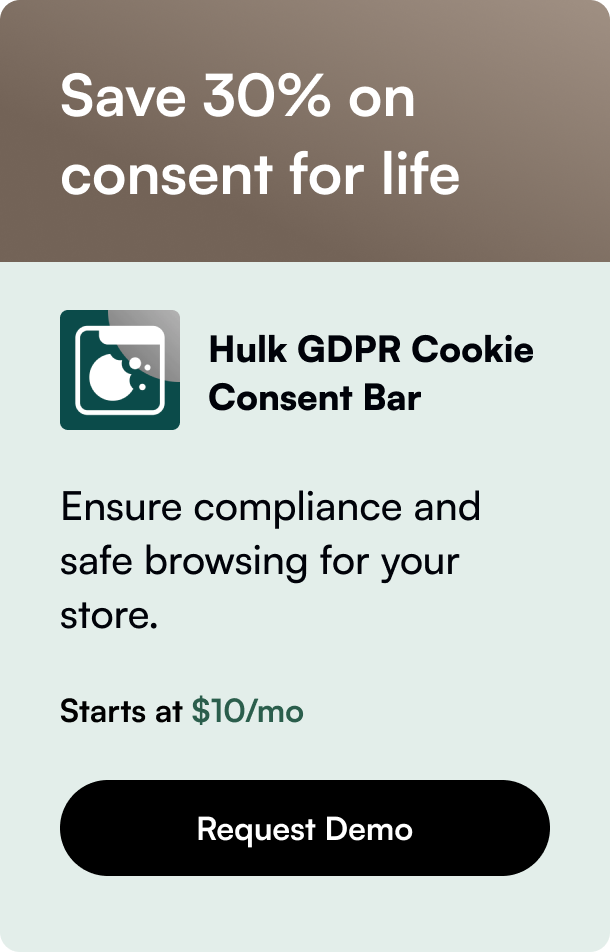Table of Contents
- Introduction
- The Role of Meta Pixel in Your Marketing Strategy
- Step-by-Step Instruction to Connect Pixel to Shopify
- Conclusion
- FAQ Section
Introduction
Are you looking to track your Shopify store's data with precision? Connecting a Pixel to your Shopify store is the way to go. A Pixel, specifically the Meta pixel (formerly Facebook Pixel), is a potent tool that can transform the way you collect valuable customer insights, enabling you to make more informed marketing decisions. In this guide, we’ll explore the importance of Pixel, and provide a step-by-step process on how you can connect a Pixel to your Shopify store.
Whether you're running ads on Facebook or Instagram, or looking to understand customer behavior on your site, a Pixel can be your ally. Exciting, isn't it? So how do you go about integrating this system into your Shopify store? That's exactly what you're going to learn today.
The Role of Meta Pixel in Your Marketing Strategy
Before we dive into the technical steps, let’s discuss briefly what a Pixel is and what it does. A Meta pixel is a code that you put on your website. It collects data that helps you track conversions from Meta ads, optimize ads, build targeted audiences for future ads, and remarket to people who have already taken some form of action on your website.
Historical Context and Recent Developments
With cookie tracking facing increased scrutiny and the imminent shift to privacy-focused browsing, the importance of the Meta pixel has grown even more. As third-party cookies become less reliable, pixels that track user behavior on-site provide critical insights into user actions. Recent updates, such as the shift from Facebook Pixel to Meta pixel, aim to better encapsulate its broadened capabilities beyond Facebook.
Step-by-Step Instruction to Connect Pixel to Shopify
Now, let's get into how you can integrate a Pixel with your Shopify store. At the end of this section, you'll understand and be able to execute the connection yourself.
Step 1: Access Meta Pixel Creation Tool
Start by logging into your Facebook Business Manager account. Create a Meta Pixel by navigating to the Pixels section under Event Manager. Here you can create a new Meta pixel or use an existing one if you already have it.
Step 2: Integrate Pixel with Shopify
Next, you need to integrate the newly created Meta pixel with your Shopify store:
- Open your Shopify admin panel, navigate to 'Online Store' and then to 'Preferences.'
- Scroll down to the Facebook Pixel section, and you'll see an option to enter your Meta pixel ID. Copy the Pixel ID from the Meta Business Manager and paste it here.
- If prompted, activate data sharing to ensure that shopper behavior is tracked accurately.
Step 3: Verifying the Connection
After adding the Pixel ID to your Shopify store:
- Use tools such as the Meta Pixel Helper to verify whether the pixel is active on your website.
- Perform a test transaction or visit the tracked pages and check your Pixel dashboard to ensure data is being captured correctly.
Special Note on Duplicate Data
An important consideration when adding a pixel is to avoid duplicate tracking. If you work with an advertising agency or use an app to manage your Facebook ads, ensure that the pixel added does not overlap with other tracking codes that might already be present.
Understanding Data-Sharing Levels
Shopify offers different levels of data sharing - Standard, Enhanced, or Maximum. Choosing one over the other depends on how much customer data you're comfortable sharing.
Steps for Advanced Pixel Options
In some cases, you might want to get more granular with the data collection:
- Use the Event Setup Tool from Facebook to track specific user actions on your store.
- Choose what events to track, such as Add to Cart or Purchases, to align with your business goals and current promotional strategies.
Conclusion
By connecting a Meta pixel to your Shopify store, you’ve unlocked a window into deeper customer behavior insights that can guide comprehensive marketing strategies. Not only have you bolstered your ability to track the effectiveness of your Meta ads, but you've also learned to use the tools to optimize your online store's marketing prowess. Remember, as you proceed, always avoid duplicating pixels and overloading your site with unnecessary tracking.
FAQ Section
Q: Is the Meta pixel free to use? A: Yes, there is no cost associated with creating and using the Meta pixel.
Q: How long does it take for the pixel to start collecting data? A: Almost immediately after you set up and verify your pixel, it begins collecting data as users interact with your website.
Q: Can I use one Meta pixel for multiple websites? A: While it's technically possible to use a single pixel for multiple sites, it's not recommended as it can complicate data analysis.
Q: What if I already have an older version of the Facebook Pixel? A: You should migrate your old pixel to the new Meta Pixel to benefit from the latest updates and integrations native to Shopify.
Q: Will connecting a Meta pixel to my Shopify impact website load times? A: There should be no significant impact. Meta pixels are designed to work seamlessly and load asynchronously with your web pages.
Now that you’re equipped with the knowledge of connecting a pixel to Shopify, it’s time to apply it and transform the insights into actionable, growth-oriented marketing plans. Happy tracking!







